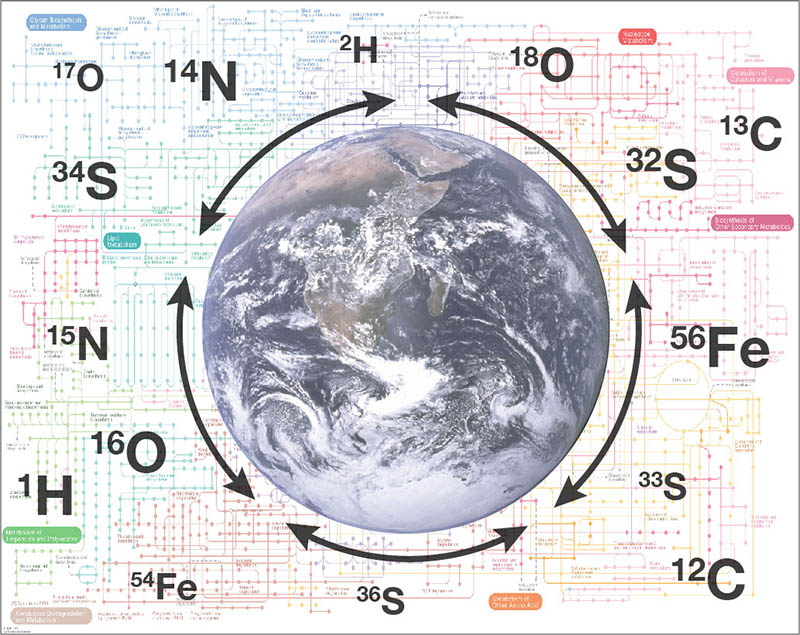Where do isotope effects in biogeochemical transformations come from? How are they expressed and preserved in the environment? What can (and can’t) they tell us about the processes, environments and organisms producing them? This graduate-level course will investigate the origins of stable isotope fractionation in geochemical systems with special emphasis on the role of biological catalysts as key drivers of isotopic effects during biogeochemical transformations. The class will cover a wide range of topics relevant to isotope fractionation including partition functions, diffusional, enzymatic and equilibrium isotope effects, open and closed system behavior, Rayleigh distillation, reservoir effects, enzymatic catalysis, physiological drivers and signal preservation.
Lectures by the instructor will provide historical and theoretical background on all concepts and approaches, and introduce basic modeling techniques for exploring isotope effects (no prior experience required). Each student will then choose an isotopic effect in a system of interest or from a list of topics provided by the instructor (examples include the various forms of carbon fixation, e.g. C3 vs. C4 photosynthesis; oxygen respiration; denitrification; nitrogen fixation; lipid biosynthesis; sulfate reduction; biomineralization; methanogenesis, etc.). The class will then focus in on these student-selected topics with discussions of relevant primary literature.
Students are expected to read all papers for the discussions (1-2/week), and will give two small presentations, one to introduce their topic to provide background for the class discussion of the readings, and one the following week recapitulating the inner workings of their system and presenting a simple model for the class to explore the system together (with help from the instructor). Grades will be based on reading, discussion, participation and presentation quality.

